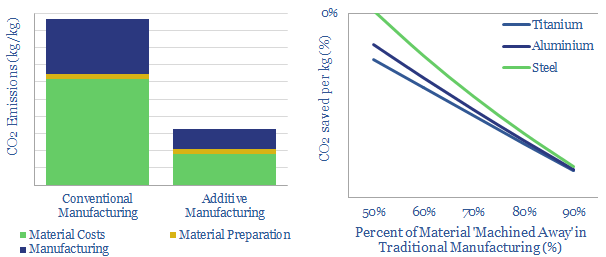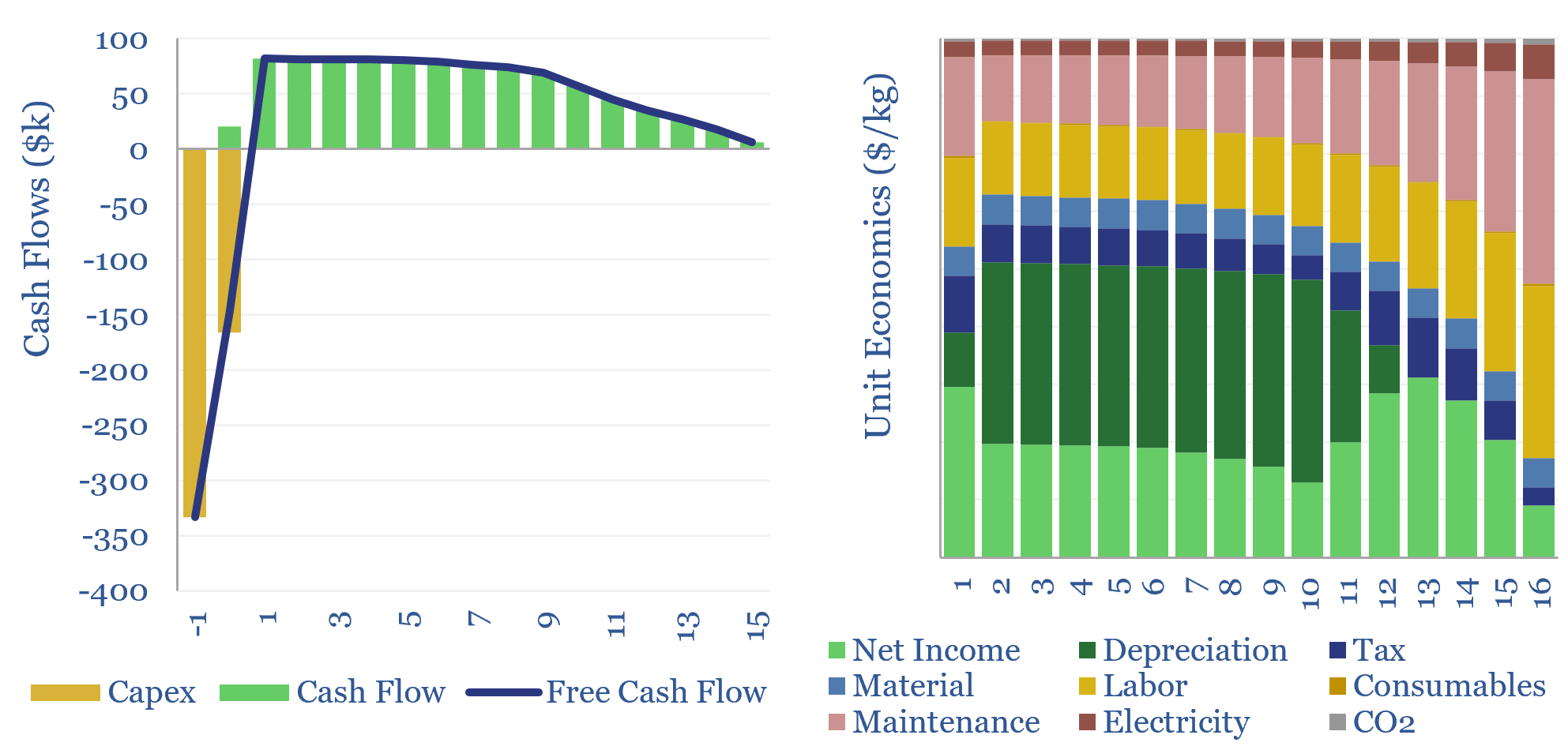The costs of 3D printed products are estimated between $10-100/kg in this data-file, in order to earn a 10% IRR on constructing and running an additive manufacturing machine, net of labor costs, energy costs, maintenance and materials. Economic costs, energy intensity and CO2 intensity vary as a function of the material and can be stress-tested in the model.
Additive manufacturing processes may include binder jetting, fused filament fabrication, powder bed fusion or the sub-variant of selective laser melting. In order to understand the costs of 3D printed products, we have tabulated details into 30 additive manufacturing products, which are available commercially in 2025.
In each case, we tabulated the product’s capex ($k), power consumption (kW), build rate (cm3/hour) and build chamber volume (in liters or m3). This results in useful cross-plots (example below), so we can capture a typical additive manufacturing set-up, its capex, build-rate and power consumption, in an economic model.

The costs of 3D printed products will range from $10-100/kg, depending on the material that is chosen. The range is wide because different materials have different underlying costs, but also different densities. If you are 3D printing at 1,000cm3/hour then after an hour of build-time, you will have deposited just 1kg of polymers, 3kg of aluminium, 4kg of titanium, 8kg of steel and 9kg of nickel-based super-alloy (e.g., Inconel).
Typical economics for additive manufacturing will see the costs of 3D printed products comprising capital costs associated with additive manufacturing machines (50%), maintenance (20%), labor (15%), materials (10%) and electricity (5%). The numbers can be stress-tested in the data-file.
Manufacturing metal components can be extremely energy intensive, emitting 50-250kg of CO2 per kg of finished parts, as 60-95% of original materials are machined away in the manufacturing process. Additive manufacturing is also surprisingly energy intensive, estimated at 10-100 MWH/ton, and as shown in the data-file.
Where additive manufacturing is able to deliver c65% CO2 savings, per kg of materials, is when it avoids the machining away of energy-intensive inputs materials that cannot be recycled (charts below). The calculations include material costs, preparation, machining and additive manufacturing itself. Our numbers are based on technical papers.

Please download the data-file to stress-test the costs of 3D printed products, made via additive manufacturing. We have also published a broader library of research into additive manufacturing, investment casting and polymer extrusion.
